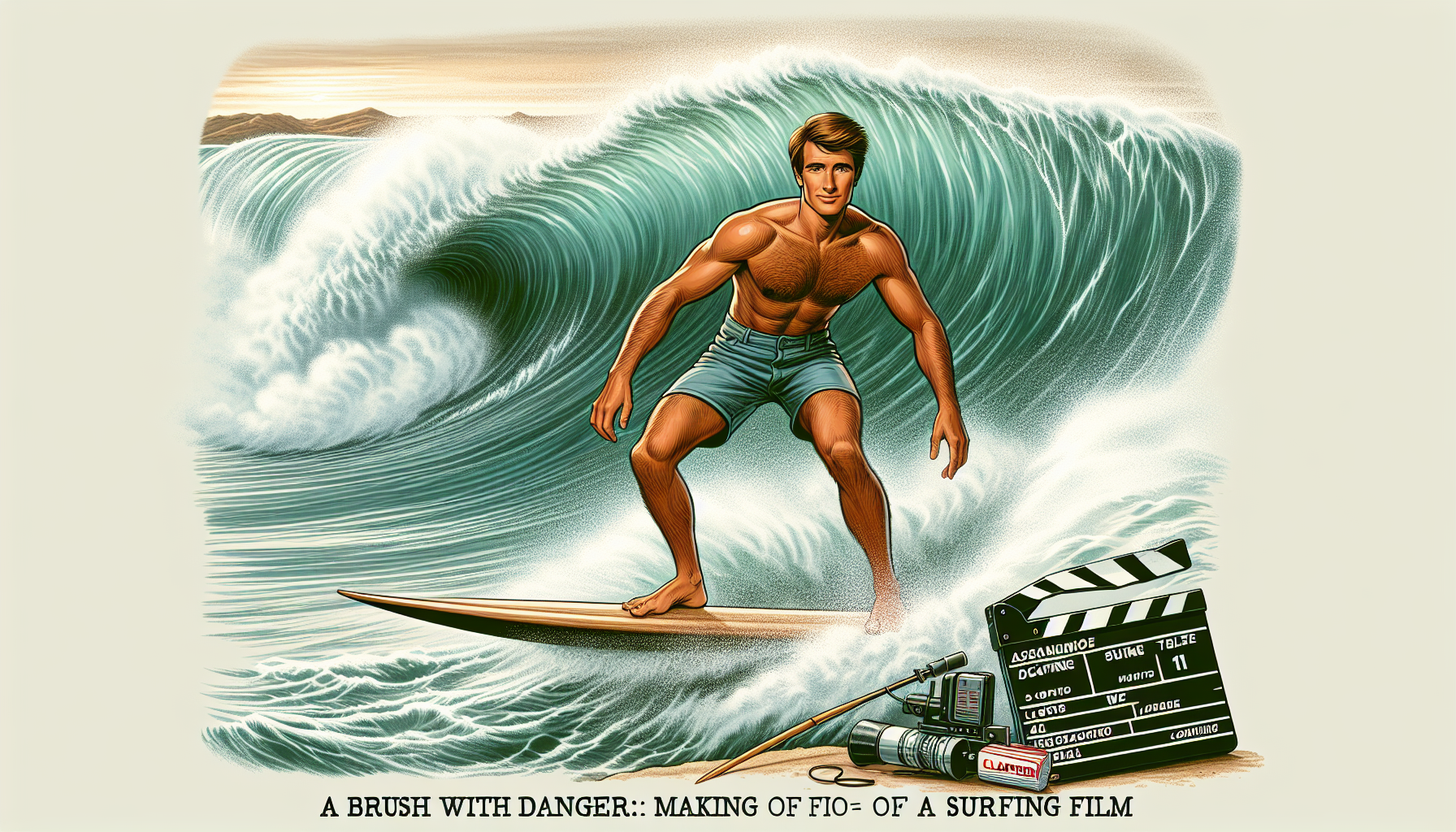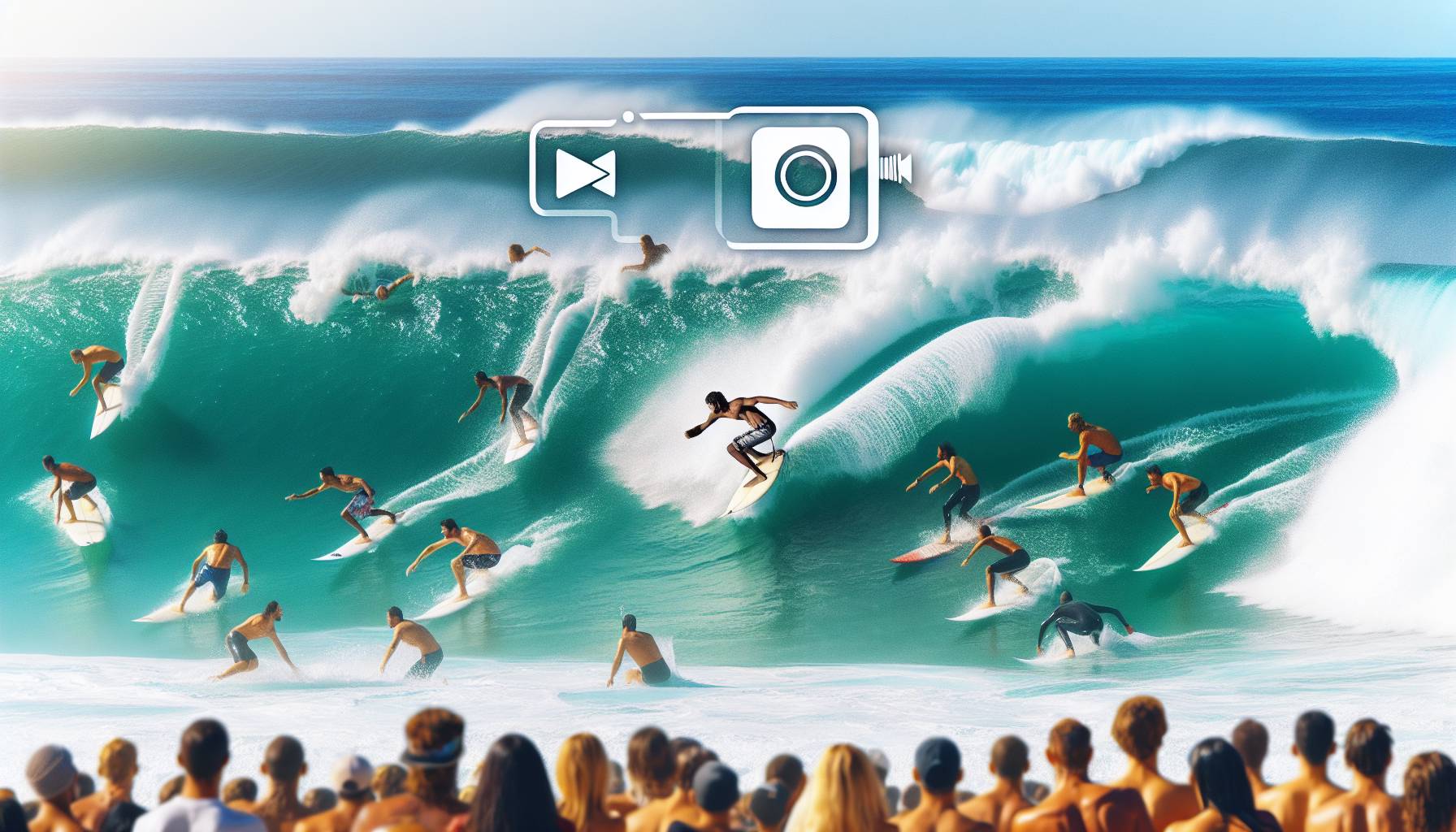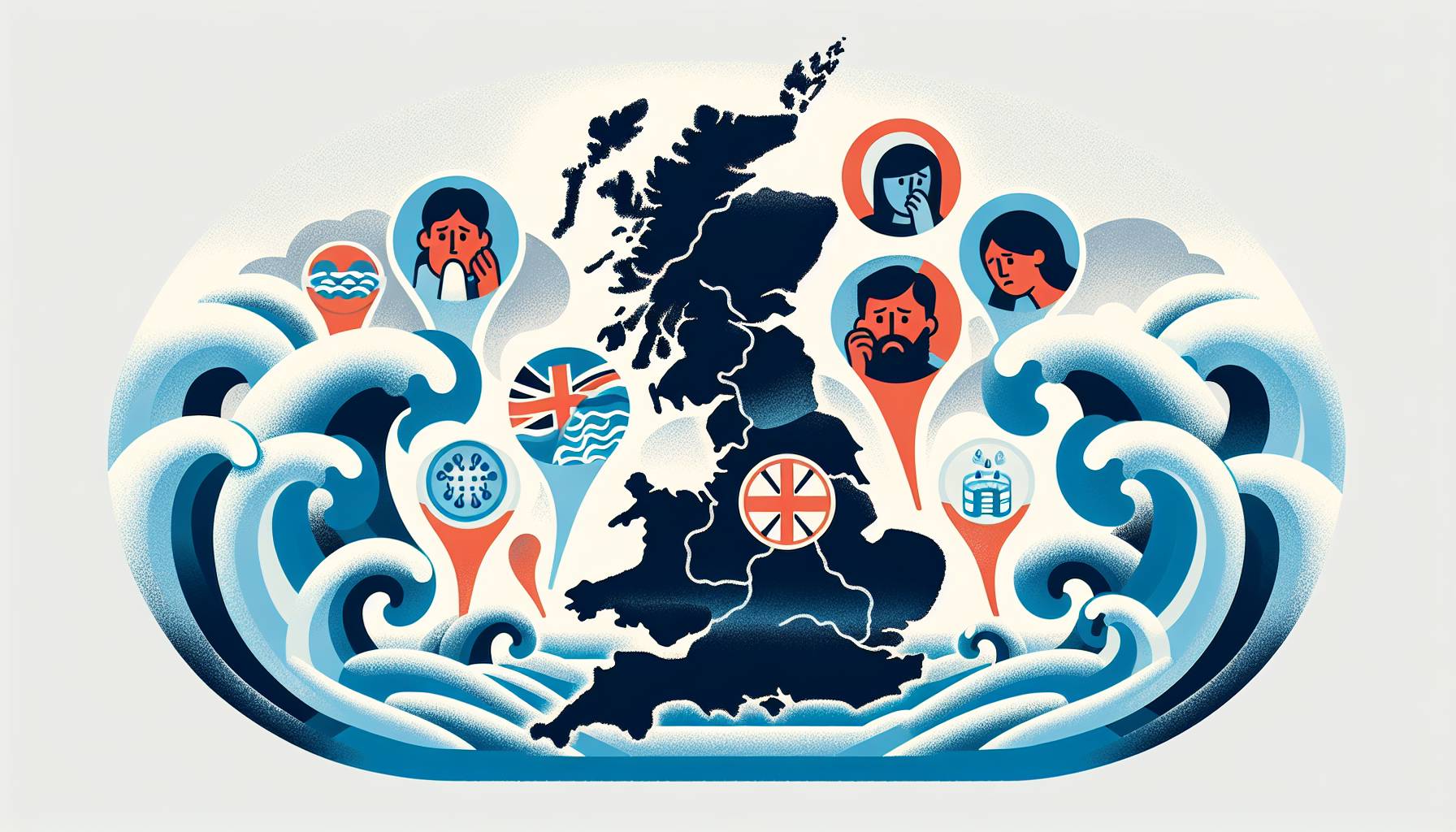
Nicolas Cage’s near-death experience
While filming a pivotal surfing sequence for The Surfer, Nicolas Cage found himself in a life-threatening situation that underscored the raw power of the ocean and the risks actors sometimes face in pursuit of authenticity. The incident occurred off the coast of Western Australia, where the production team had chosen to shoot on location to capture the region’s renowned surf conditions. According to Cage, what began as a routine take quickly escalated into a harrowing ordeal when an unexpectedly large set rolled in, catching both the actor and the safety crew off guard.
“I was completely submerged and tossed around like a rag doll,” Cage recalled in a recent interview. “There was a moment where I genuinely thought I wasn’t going to make it back to the surface.” The actor, known for his intense commitment to roles, had undergone weeks of surf training prior to filming, but even that preparation couldn’t fully shield him from the unpredictable nature of the swell that day.
Production sources revealed that the wave that nearly overwhelmed Cage was estimated to be over 12 feet high, breaking with considerable force. Despite the presence of professional surf safety personnel and rescue divers, the situation became critical when Cage was pulled into a strong rip current. It took several tense moments before he was able to resurface and signal for assistance.
“It was one of the scariest moments of my career,” Cage admitted. “But it also reminded me of the respect we need to have for the ocean. It’s beautiful, but it doesn’t play games.”
The incident has since become a talking point among both film insiders and the surfing community, many of whom have praised Cage’s resilience and the production’s commitment to realism. For Australian surfers familiar with the dangers of local breaks, the story resonates deeply, serving as a stark reminder of how quickly conditions can change—even for those with experience and support on hand.
Behind the scenes of The Surfer
Filming The Surfer was no ordinary production. Shot along the rugged and wave-rich coastline of Western Australia, the film’s creators made a deliberate choice to embrace the raw, untamed energy of the ocean rather than rely on green screens or studio tanks. This decision brought a level of authenticity rarely seen in surf cinema, but it also introduced a host of logistical and safety challenges that tested the limits of the cast and crew.
Director Lorcan Finnegan, known for his atmospheric storytelling, insisted on capturing real surf conditions to immerse audiences in the protagonist’s emotional and physical journey. To achieve this, the production team collaborated closely with local surf experts, marine coordinators, and seasoned water cinematographers. Among them were several Australian big wave surfers who served as both stunt doubles and consultants, ensuring the surf sequences remained true to the sport’s culture and technical nuances.
“We didn’t want to fake it,” said Finnegan during a behind-the-scenes featurette. “The ocean is a character in this film, and we needed to treat it with the same respect and unpredictability as any lead actor.”
To prepare for the demanding shoot, Nicolas Cage underwent intensive surf training under the guidance of local instructors in Margaret River. The sessions focused not only on technique but also on ocean awareness—reading swells, navigating rips, and understanding the rhythm of the break. Cage reportedly spent hours each day in the water, gradually building the confidence needed to perform in real surf conditions.
The production also invested in cutting-edge water camera rigs and drone technology to capture the dynamic movement of waves from multiple angles. These tools allowed for immersive, close-up shots that place viewers directly in the heart of the action. However, the use of such equipment in unpredictable surf zones required meticulous planning and split-second coordination between the camera crew and safety teams.
- Local surf lifesavers were stationed on jet skis throughout the shoot, ready to intervene at a moment’s notice.
- Weather and swell forecasts were monitored daily, with filming schedules adjusted to align with optimal conditions.
- All cast and crew underwent safety briefings and emergency drills before entering the water.
Despite the inherent risks, the atmosphere on set was one of camaraderie and shared purpose. Many crew members described the experience as both humbling and exhilarating, with the natural beauty of the Western Australian coastline serving as a constant reminder of why they chose to tell this story in such a visceral way.
“There were days when the surf was too wild to shoot, and we’d just sit on the beach watching the sets roll in,” said one crew member. “But those moments gave us a deeper appreciation for what surfers face every day. It wasn’t just filmmaking—it was a lesson in respect.”
Rising anticipation for the film
With Nicolas Cage’s gripping account of his brush with death and the film’s commitment to authentic surf cinematography, The Surfer has quickly become one of the most talked-about upcoming releases among both film buffs and the Australian surfing community. The buzz is especially strong in coastal towns like Margaret River and Torquay, where locals are eager to see their home breaks featured on the big screen in a way that honours the sport’s raw intensity and cultural roots.
Australian surf forums and social media groups have been abuzz with speculation about the film’s storyline and how it will portray the surfing lifestyle. Early teasers hint at a psychological drama set against the backdrop of isolation and the ocean’s unforgiving nature—elements that resonate deeply with surfers who understand the solitary, meditative aspects of the sport. The fact that the film was shot on location in Western Australia, rather than a studio backlot, has only added to its credibility among core surf audiences.
Advance screenings for select industry insiders have reportedly left viewers impressed by the film’s visual storytelling and Cage’s intense performance. His portrayal of a man confronting both inner demons and the physical challenges of the sea is being hailed as one of his most committed roles in recent years. For many, the authenticity of the surf scenes—captured with real waves, real boards, and real danger—sets The Surfer apart from previous Hollywood attempts at surf cinema.
- Surf shops along the east and west coasts are already reporting increased interest in the film, with some planning themed events around its release.
- Local surf clubs are organising group screenings, viewing the film as a celebration of Australian surf culture on an international stage.
- Tourism boards in WA are preparing for a potential uptick in visitors inspired by the film’s dramatic coastal visuals.
For many Australian surfers, The Surfer represents more than just another movie—it’s a rare opportunity to see their world depicted with the respect and realism it deserves. With its combination of high-stakes drama, breathtaking surf footage, and a lead actor willing to risk it all for the role, the film is shaping up to be a landmark moment in surf cinema.
“We’ve seen a lot of surf movies over the years, but this one feels different,” said a Perth-based surfer after viewing the trailer. “It’s not just about the waves—it’s about what the ocean does to you, inside and out.”
Nicolas Cage’s near-death experience
Turns out, even Hollywood legends can get caught inside. Nicolas Cage, the bloke known for going full tilt in every role, nearly carked it while filming a gnarly surf scene for his new flick, The Surfer. During a recent interview, Cage spilled the beans about a moment that got way too real — a rogue set rolled in during shooting, and he was nearly dragged under for good.
“I thought I was a goner,” Cage admitted, describing how the swell turned from cinematic to downright savage in seconds. The scene was meant to be the film’s big adrenaline hit, but Mother Nature had her own script. With no stunt double in sight, Cage paddled out himself — proper old-school — and copped the full brunt of a heavy break that nearly ended more than just the scene.
“I’ve done some wild stunts in my time, but this one… this one was different. The ocean doesn’t care who you are,” Cage said.
Locals on set said the conditions were sketchy from the get-go — strong rips, shifting peaks, and a swell that kept building. Cage, ever the method actor, insisted on doing the scene himself. Brave? Maybe. Bonkers? Definitely. But it’s that kind of commitment that’s got Aussie surf fans frothing to see how it all plays out on screen.
One crew member reckoned, “He took a proper flogging out there. Came up coughing and laughing — bloke’s got saltwater in his veins now.”
It’s not every day you hear about a Hollywood A-lister nearly getting sent to Davy Jones’ locker for a movie. But for Cage, it’s just another day chasing the perfect shot — and maybe a few barrels along the way.
Behind the scenes of The Surfer
Filming The Surfer wasn’t just about pointing a camera at the ocean and yelling “action.” The crew set up shop along some of WA’s most rugged coastline, where the waves don’t muck about. Think remote beaches, unpredictable swells, and a whole lot of sand in places it shouldn’t be. The production leaned hard into authenticity — no green screens, no fake foam, just real surf and real risk.
To get the right vibe, the filmmakers brought in local surf consultants and water safety teams who know the breaks like the back of their sunburnt hands. They worked closely with Cage and the stunt team to choreograph scenes that looked legit without turning the set into a rescue mission. Still, as we’ve seen, the ocean had other ideas.
“Mate, we weren’t just making a movie — we were surviving it,” joked one of the assistant directors. “Every day was a new swell, a new challenge. You’d check the surf report and just hope the gear didn’t get washed away.”
The crew had to lug equipment across dunes, shoot between tides, and deal with everything from blown-out conditions to rogue jellyfish. One poor soundie got stung mid-take and still held the boom — now that’s commitment. And Cage? He was out there every morning, waxing up and paddling out like he was born in the lineup.
- Filming took place over six weeks along the WA coast
- Local surfers were cast as extras and stunt doubles
- Scenes were shot during actual swell windows — no CGI waves here
There’s a rawness to the footage that only comes from being in the thick of it. No polished Hollywood gloss — just salt, sweat, and a bit of blood. Aussie surf fans will spot familiar breaks and maybe even a few familiar faces in the background, all adding to the film’s gritty, homegrown feel.

